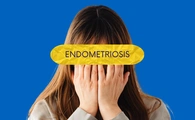

Azoospermia is a male disorder characterized by the absence of sperm in the semen, which compromises the ability to reproduce naturally. It is one of the main causes of male infertility and may be associated with problems in the production, transport or release of sperm.
The prevalence of azoospermia varies, but it is estimated that about 1% to 2% of the general male population may be affected by this condition, making it one of the main reasons why patients turn to the help of an anonymous sperm donor.
What Are the Causes of Azoospermia?
Before determining a specific treatment, it is essential to distinguish between two types of azoospermia: obstructive and secretory.
-
Obstructive azoospermia: This occurs when the seminal ducts that carry sperm to the outside are blocked (or absent), so no sperm are seen in the ejaculate. Causes can include vasectomy, congenital malformations of the vas deferens, or acquired obstructions due to infections, inflammation or previous surgeries in the genital area.
-
Secretory azoospermia: This results from alterations in spermatogenesis, the process of sperm production in the testicle. The absence or alteration of this process can be mainly due to testicular or hormonal problems (such as testosterone deficiency). Other causes include testicular infections, exposure to radiation or chemotherapy, and autoimmune disorders affecting the testicles.
How Is Azoospermia Diagnosed?
Azoospermia has no obvious symptoms, and men affected may have a normal libido and experience no pain during ejaculation. The only sign of this condition is the absence of sperm in the ejaculated semen, which is detected through a semen analysis.
Because there are no symptoms, a spermogram (semen analysis) is necessary to diagnose azoospermia.
This test involves collecting an ejaculate sample, which is examined in the laboratory to assess both the concentration and motility of sperm.
According to the results, the following sperm concentration values may be found in a semen analysis:
- Azoospermia: Zero sperm in the ejaculate.
- Cryptozoospermia: Fewer than 100,000 sperm per milliliter of ejaculate.
- Oligospermia: Fewer than 15 million sperm per milliliter of ejaculate.
- Normozoospermia: The sample is within normal parameters.
What Happens If a Man Has Azoospermia? Treatments for Azoospermia
Once the semen analysis has been performed, we will know whether we are dealing with secretory or obstructive azoospermia. This allows us to choose the most appropriate treatment.
Treatment for Obstructive Azoospermia
Testicular biopsy offers an alternative for patients with obstructive azoospermia.
Because there is a physical blockage in the vas deferens that prevents sperm from mixing with the ejaculate, the main solution is surgery. Reconstructive surgery of the vas deferens (vasovasostomy) can be performed to restore the normal flow of sperm. However, it is important to note that the success of this surgery varies and does not always guarantee full recovery of fertility.
With a testicular biopsy, we are able to access the sperm “trapped” in the testicle so they can then be used in an in vitro fertilization (IVF) treatment.
Treatment for Secretory Azoospermia
Regarding secretory azoospermia, the prognosis is uncertain. Treatment will depend on the reason why sperm are not being produced in the testicle.
- If it is due to a hormonal disorder, treatment with external hormones may stimulate spermatogenesis again and restore the presence of sperm in the ejaculate.
- In some cases, a testicular biopsy may be performed to locate areas of sperm production.
- If azoospermia is related to genetic problems, there may be no specific treatments and the use of assisted reproduction techniques such as in vitro fertilization (IVF) with donor sperm may be considered.
In both types of azoospermia, when conventional treatments are not effective, the assisted reproduction techniques mentioned above — particularly intracytoplasmic sperm injection (ICSI) — are often viable options to achieve pregnancy.
These techniques allow the fertilization of eggs with sperm in a controlled laboratory environment, overcoming the limitations of natural sperm production or transport. The choice of treatment will depend on the specific cause of the azoospermia, the patient’s overall health, and other relevant medical factors.
Can Azoospermia Be Prevented?
Prevention of azoospermia may be possible in some cases but not in all. Because azoospermia can be caused by a variety of genetic, hormonal, environmental and health factors, it is not always possible to prevent its development. However, the following considerations may help reduce the risk in certain situations:
- Healthy lifestyle: Maintaining a healthy lifestyle can have a positive impact on reproductive health. Avoiding smoking, excessive alcohol and recreational drugs, and maintaining an appropriate body weight are factors that can positively influence sperm health.
- Protection against injuries: Injuries to the genital area can damage the testicles and affect sperm production. Using proper protective equipment during sports and work activities can help prevent injuries.
- Avoiding exposure to toxins: Exposure to toxic chemicals in the workplace or in household products can negatively affect reproductive health. Avoiding unnecessary exposure and following safety practices at work can be beneficial.
- Early treatment of infections: Some infections, especially those affecting the genitals and testicles, can have a harmful effect on sperm production. Seeking early medical treatment for infections can help prevent complications.
- Management of medical conditions: Some chronic medical conditions, such as diabetes and high blood pressure, can negatively impact reproductive health. Keeping these conditions under control through proper treatment and medical follow-up may help prevent fertility problems.
- Genetic evaluation: In some cases, when there is a family history of fertility problems or genetic conditions related to azoospermia, genetic testing before trying to conceive may be possible. This can help identify potential risks and make informed decisions about treatment or assisted reproduction options.
Book a free consultationDo you have any questions or need more information?
At Fertility Madrid, we specialise in treatments such as egg donation, in vitro fertilisation and artificial insemination, among others.
Please do not hesitate to contact our professionals at our fertility clinic and they will answer all your questions without obligation.

Luis Llanes
Urólogo




